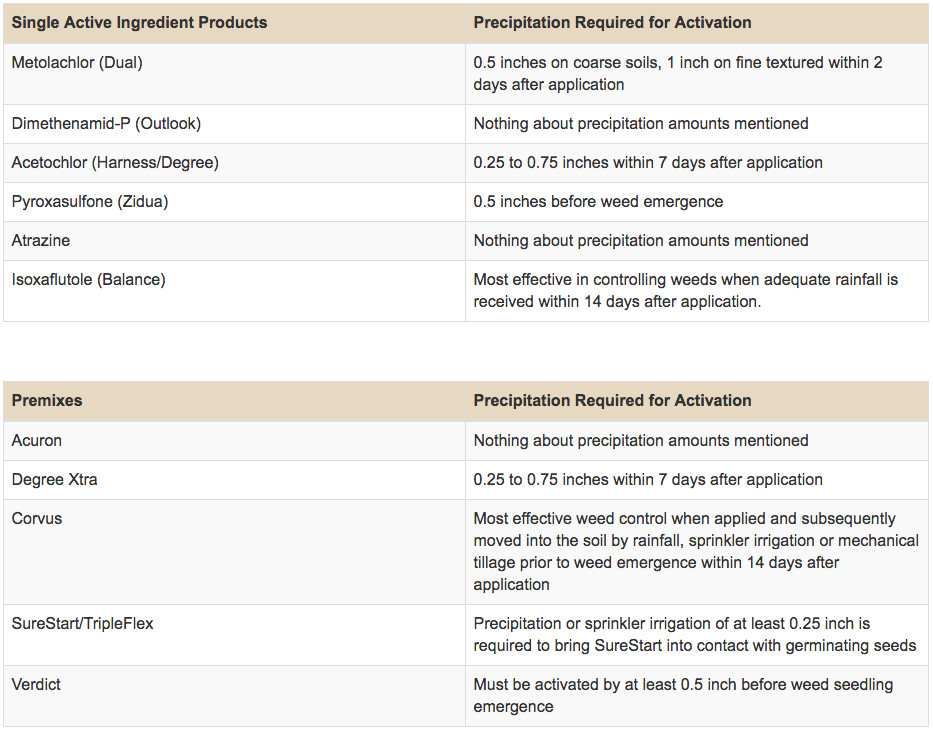Crop planting has progressed at an amazing pace over the last week. Many of these acres will also receive soil applied, residual herbicides for control of germinating weed seedlings. Soil applied pre-emergent herbicides require moisture for activation. What this really means is that we want the herbicide to be dissolved in the soil water (aka “solution”) so it is able to be taken up by the germinating weed seedling root or shoot. When soil conditions are dry, herbicide molecules will remain closely associated with soil particles and not able to move into weed seedlings via mass flow processes. As a result, weed control with soil applied herbicides can be less than desirable under dry conditions.
We are asked quite often how much rainfall it takes to activate a soil-applied, residual herbicide. The answer depends on many factors which include:
1) How water-soluble the herbicide is,
2) how sensitive the weed specie is to the specific active ingredient,
3) what stage is the weed seedling is when exposed to the herbicide,
4) did the weed seedling receive a high enough dose to overcome any natural herbicide tolerance or metabolism mechanisms,
5) how moist was the soil when the herbicide was applied.

As you can see, the answer to the question “how much moisture is required to activate my herbicide” requires consideration of several factors.
A quick review of several herbicide (but not all) labels shows the following edited comments with regards to precipitation and herbicide activation:
As you can see, the answer varies a bit by herbicide. So, what we tell our clientele that ask these questions is following. Generally we would like to see 0.75 - 1 inch of precipitation within the first week. Also, we would like to see approximately 2 inches of precipitation spread out over the first two weeks after the herbicide was applied for optimal herbicide performance.
Given that our current weather pattern is dry, if 10-14 days have passed without rainfall following a Pre-treatment and weeds are starting to break, consider the following:
- Start planning for a post herbicide application
- Use a rotary hoe to dislodge small seedlings and buy some time for a precipitation event to activate the herbicides
- Some herbicides can “reach back” or “recharge” on small annual weeds when rainfall occurs, although depending on this may be a little like buying a lottery ticket. The HPPD (Group 27) herbicides (Balance, Corvus, Lumax, Lexar, Instigate, Prequel, etc.) tend to have better “reach back” potential than some other herbicides and escaped grass control is probably of greater concern. The Group 5 herbicides (Photosystem II inhibitors) like atrazine, simazine, and metribuzin will also control small emerged susceptible broadleaves via root uptake.





